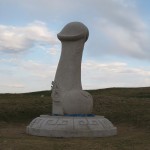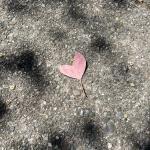Neo-Paganism is a nature religion which, like other nature religions, perceives nature as both sacred and interconnected. From this perspective, humans in the developed world have become tragically disconnected from nature, which has been desacralized in both thought and deed. Healing this rift is possible only through a profound shift in our collective consciousness. This constellation of ideas can be called “Deep Ecology”. This is the second in a 5-part series about some of “roots” of Deep Ecology. This essay was originally published at Neo-Paganism.com.

John Muir is one of the patron saints of the environmental movement. He was an early conservationist and the founder of the Sierra Club. He wrote extensively about his exploration of the Sierra Nevada mountains of California, merging his inspiring personal experience of the sublimity of the natural world with a call for direct action to preserve wild nature. His activism helped to preserve Yosemite Valley and other wilderness areas as national parks.
Muir was raised by a Presbyterian minister and by the age of 11 he was able to recite most of the Bible by heart. He cut short a career in industry following an accident that left him temporarily blinded. He then walked 1000 miles from Indiana to Florida, and then sailed to San Francisco in 1869. From there, he walked to the Sierra Nevada mountains where what he saw changed his life. From the summit of the Pacheco Pass, Muir looked down into the Central Valley.
“A landscape was displayed that after all my wanderings still appears as the most divinely beautiful and sublime I have ever beheld. … the mighty Sierra, miles in height, in massive, tranquil grandeur, so gloriously colored and so radiant that it seemed not clothed with light, but wholly composed of it, like the wall of some celestial city.”
Muir built a cabin along Yosemite Creek and designed it so that a section of the stream flowed through a corner of the room so he could enjoy the sound of running water. Muir lived there for two years and wrote about his experience in My First Summer in the Sierra (which was not published until 1911). “We are now in the mountains and they are in us,” “wrote Muir, “kindling enthusiasm, making every nerve quiver, filling every pore and cell of us. Our flesh-and-bone tabernacle seems transparent as glass to the beauty about us, as if truly an inseparable part of it, thrilling with the air and trees, streams and rocks, in the waves of the sun …”
In 1903, President Theodore Roosevelt accompanied Muir on a visit to Yosemite. Roosevelt left his presidential entourage and set off with Muir and a guide into the back country where they camped and talked late into the night. Muir convinced Roosevelt that the best way to protect Yosemite Valley was through federal management.
Muir was inspired by the Transcendentalists, Emerson and especially Thoreau. (He even met Emerson in 1871, describing him later, tellingly, as a “sequoia-like soul”.) Like the Transcendentalists, Muir believed that nature was the revelation of God. “You say that good men are ‘nearer to the heart of God than woods and fields, rocks and waters.’ Such distinctions and measurements seem strange to me,” wrote Muir to a friend,
“Rocks and waters, etc., are words of God and so are men. We all flow from one fountain Soul. All are expressions of one Love. God does not appear, and flow out, only from narrow chinks and round bored wells here and there in favored races and places, but He flows in grand undivided currents, shoreless and boundless over creeds and forms and all kinds of civilizations and peoples and beasts, saturating all and fountainizing all.”
“All of these varied forms, high and low, are simply portions of God radiated from Him as sun, and made terrestrial by the clothes they wear.”
Muir’s language sometimes came close to pantheism. His language would be familiar to Neo-Pagans today: “I will touch naked God,” he wrote in anticipation of a trip into Yosemite. Elsewhere, his words seemed more animistic:
“I’ll interpret the rocks, learn the language of flood, storm, and the avalanche. I’ll acquaint myself with the glaciers and wild gardens, and get as near the heart of the world as I can.”
“The whole wilderness seems to be alive and familiar, full of humanity. The very stones seem talkative, sympathetic, brotherly. No wonder when we think that we all have the same Father and Mother.”
“When I discovered a new plant, I sat down beside it for a minute or a day, to make its acquaintance and hear what it had to tell. … I asked the boulders I met, whence they came and whither they were going.”
“I ran down the flowery slopes exhilarated … The plant people seemed glad, as if rejoicing with me, the little ones as well as the trees …”

Muir distinguished between utilitarian conservation of the forest as a commercial resource, and preservation of the forest for its own intrinsic spiritual value, anticipating what came to be called “deep ecology”. Like the Transcendentalists, Muir saw wilderness as an antidote to civilization, which breeds the wild inner nature out of humankind. He called the mountains his true “home” and described nature as both healing and spiritual nourishing.
“Thousands of tired, nerve-shaken, over-civilized people are beginning to find out that going to the mountains is going home; that wilderness is a necessity; and that mountain parks and reservations are useful not only as fountains of timber and irrigating rivers, but as fountains of life. Awakening from the stupefying effects of the vice of over-industry and the deadly apathy of luxury, they are trying as best they can to mix and enrich their own little ongoings with those of Nature, and to get rid of rust and disease. Briskly venturing and roaming, some are washing off sins and cobweb cares of the devil’s spinning in all-day storms on mountains; sauntering in rosiny pinewoods or in gentian meadows, brushing through chaparral, bending down and parting sweet, flowery sprays; tracing rivers to their sources, getting in touch with the nerves of Mother Earth; jumping from rock to rock, feeling the life of them, learning the songs of them, panting in the whole-souled exercise, and rejoicing in the deep, long-drawn breaths of pure wildness.”
Muir described a “natural beauty-hunger” which is threatened by those who want to commercialize everything: “Everybody needs beauty as well as bread, places to play in and pray in, where Nature may heal and cheer and give strength to body and soul alike.” Muir wrote, “In God’s wildness lies the hope of the world — the great fresh, unblighted, unredeemed wilderness. The galling harness of civilization drops off, and wounds heal ere we are aware.”
Muir discovered that direct experience of nature reveals the ecological interconnectedness of all things, an common Neo-Pagan theme. This is expressed in one of his most famous aphorisms: “When we try to pick out anything by itself, we find it hitched to everything else in the universe.” In a late journal entry in 1913, Muir denied that his life was an abjuration of the world: “I only went out for a walk, and finally concluded to stay out till sundown, for going out, I found, was really going in.” This experience of interconnectedness creates an attitude of humility and reverence toward the natural world, which motivated Muir’s political activism.
Muir often used religious language to describe his experience of the mountains, and he wrote with the fervor of the Old Testament prophets. He compared the despoliation of Yosemite to the profanation of the Jewish temple in Jerusalem by the money lenders. (This sentiment was echoed by Edward Abbey in 1968 when he compared the desert wilderness to a cathedral.) Of Hetch Hetchy Valley, Muir wrote, “no holier temple has ever been consecrated by the heart of man.” Muir described a nature that was alive and sacramental:
“… every tree was excited, bowing to the roaring storm, waving, swirling, tossing their branches in glorious enthusiasm like worship. But though to the outer ear these trees are now silent, their songs never cease. Every hidden cell is throbbing with music and life, every fiber thrilling like harp strings, while incense is ever flowing from the balsam bells and leaves. No wonder the hills and groves were God’s first temples, and the more they are cut down and hewn into cathedrals and churches, the farther off and dimmer seems the Lord himself.”
Muir wrote about being “baptized in the irised foam” of waterfalls on the Sabbath. One of his biographers wrote that Muir styled himself as a modern John the Baptist who sought to immerse in “mountain baptism” everyone he could. Muir advised one friend to “break clear away, once in a while, and climb a mountain or spend a week in the woods. Wash your spirit clean …”. In 1870, Muir wrote to his friend, Jeanne Carr, describing a rapture familiar to religious mystics throughout the ages: “I’m in the woods, woods, woods, and they are in me-ee-ee. The King tree and I have sworn eternal love–sworn it without swearing, and I’ve taken the sacrament with Douglas squirrel, drunk Sequoia wine, Sequoia blood, and with its rosy purple drops I am writing this woody gospel letter.”
Neo-Pagans today are indebted to Muir, both for his environmental activism and for his religious vision of nature as a temple of the divine.
Recommended:
The Contemplative John Muir, ed. by Stephen Hatch
Ken Burns’ The National Parks: America’s Best Ideas (video)















